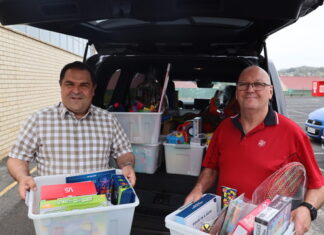WITH the weather heating up, snakes are coming out of hibernation and the South Australian Ambulance Service has urged people to remain vigilant to avoid being bitten this summer.
Paramedics have responded to 48 snake bites throughout the state, which has included three in the Limestone Coast local service area.
The most recent snakebite in the region occurred at Eight Mile Creek during the middle of the day on November 25.
Two other incidents occurred last summer on March 17 in Robe and on February 13 in Port MacDonnell.
South Australian Ambulance Service chief executive officer Jason Killens said it was important to call triple zero (000) immediately if someone was thought to have been bitten.
“Our clinicians are experts at responding to these cases, but there are also steps you can take,” Mr Killens said.
“In many cases our emergency call takers will explain how to perform life-saving first aid over the phone, all while an ambulance is on the way.”
The message comes following several snake sightings in the South East, including one on Commercial Street in the middle of Mount Gambier.
A metre-long Eastern Brown snake was also found in the laundry of a Rocky Camp resident’s home.
Intensive care paramedic Chris Cotton said medical understanding of snake bite first aid was evolving and whilst traditional pressure bandaging was still important, research has highlighted other areas for effective snake bite first aid.
“Keeping a snake bite victim at complete rest and monitoring them for deterioration are just as important as pressure bandaging,” Mr Cotton said.
“Whilst death from snakebites in Australia is rare, it is important to be ready to perform CPR immediately if a snakebite victim becomes unresponsive and stops breathing regularly.”
Mr Cotton said it was important to act quickly to deliver first aid to a person who had been bitten by a snake.
“Cardiac arrest is the most serious potential consequence of snakebite,” he said.
“If a defibrillator is close by, send someone to fetch it in case it is needed.”
While people may want to wash and treat the area where the bite occurred, Mr Cotton said it helps doctors to determine how to treat the patient if the venom is left on the bite
“It’s important not to wash venom off a bitten area as it can be used to determine which type of snake has bitten the person and what treatment may be needed at hospital,” he said.





